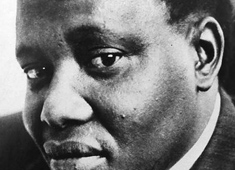[intro]In the aftermath of the of the killing of Cecil the Lion in Zimbabwe and the ensuing outrage – journalist Tim Knight takes us into the fascinating world of these magnificent animals.[/intro]
The golden pride, maybe twenty in all, heads and fangs blooded, fights, snarls, growls, rips at the impala carcass. Two massive maned males, dominate. Smaller females challenge, back off, return. Tawny, timid juveniles and cubs, fearful on the fringes, scramble for scraps.
“Such a beautiful pride …” says the game ranger, proud, like a father. “Just magnificent … beautiful.”
We sit in the Land Rover, shoot video for nearly an hour. And when we leave, the pride sprawls satisfied in the noon sun, and only a few bones of the impala are left.
It’s one of the most dramatic scenes in the TV documentary we’re shooting about wildlife conservation in one of South Africa’s best known wildlife reserve.
We drive deeper into the bush, looking for a rhino to be tranquilised and shipped to another reserve where new rhino blood is needed.
Whop whop whop whop whop …

Tim Knight on location Tswalu Kalahari Reserve.
The lion hunt mentioned at the beginning of this column was at another reserve.
The helicopter swoops down out of the washed-out sky and disappears over a koppie just ahead. We find it around the next bend, parked on the dirt track. Next to it, a small group of men stand talking.
Turns out they’re the helicopter pilot, two rangers, a tracker, and an American big game hunter from down Alabama way.
The American has come to collect his lion. All bush-jacketed, safari-hatted, crocodile-skin-booted, pink and plump, he cradles a gleaming, wildly expensive 338 Winchester Magnum in his arm.
The helicopter lifts off, heads toward a hillock about half a mile away, circles. A cell phone crackles unintelligible words.
It’s the signal. The American and a ranger, both carrying rifles, leave the group, walk together off the road through the thorn trees to our right.
They disappear into the bush, heading for the hillock where the helicopter hovers.
Whop whop whop whop whop …
It’s ironic. Within a couple of miles of each other in this wildlife reserve we admire a magnificent lion pride — vigilantly guarded, inoculated against disease — and watch a hunter set out to kill a trophy lion.
So, you ask, what’s all this got to do with Cecil, the late Zimbabwe lion now more famous than Simba of The Lion King?
When you spend three years filming and editing documentaries about African wildlife — and the lives of lions play a big part in the stories — you do learn a few things.
First, lions aren’t endangered. In fact, the widely-respected International Union for the Conservation of Nature (IUCN) list them only as “vulnerable.” And that’s mostly because humans grab more and more of their land, leave them less and less territory.
Anyway, lionesses are famously fecund, giving birth to between one and four cubs every couple of years.
The male of the species, meantime, lives a life curiously alternating between idyllic and wretched.
First the idyllic. As a cub he’s fiercely protected by the pride, even fed by whichever pride lioness happens to be lactating.
But at about three years old he starts to grow a mane. Not coincidentally, he also shows interest in the pride females. Sisters, aunts, even his own mother.
Pride males don’t like competition from their sons. Once testosterone hits, he’s banished from the pride, driven into exile.
Now the wretched. The young male spends the next few years growing stronger and hornier. But the lionesses he wants are locked up in prides guarded by bigger, tougher, battle-hardened veterans.
His testosterone surges. He checks other prides, challenges veteran dominant males. Gets beaten up. But he learns.
Now the idyllic again. One day he wins a fight, sends the veteran into his own exile, and takes over the pride. His first act is to kill all the veteran’s cubs and sire his own, which he does with considerable enthusiasm.
For the next few years he’s master of his pride. His main job is to guard the pride and its territory and impregnate the lionesses.
One inevitable day the idyll ends once again. A younger, tougher, hornier exiled male challenges and defeats him. If he survives the battle, he must leave the pride forever.
Misery again. He’s likely wounded in the fight. Even if he isn’t, he now has no lionesses to bear his cubs and hunt for him. Lions are the only social cats. Without family, without territory, he is lost.
He’s no splendid Lion King any more. To quote Thomas Hobbs, his life now is solitary, poor, nasty, brutish, and short.
He kills small game and scavenges whatever’s left by other predators. But slowly, slowly, he starves.
Eventually he’s attacked, likely by hyenas, and eaten while still alive.
I tell you all this to explain the natural life cycle of these magnificent cats. And why properly controlled, licensed trophy hunting can actually benefit African wildlife.
You see, while our ageing lion wanders in his second exile, he still looks magnificent. A rich foreign hunter will pay up to $50,000 (R631 000) to kill him and take his head home as trophy.
The money goes a long way toward paying staff and protecting the other animals.
So the lion’s only real worth at the end, is in death.
It’s a merciful death. Instead of being eaten alive by hyenas, he’s killed quickly, cleanly, by the hunter or the ranger who guards the hunter.
And the $50,000 paid for his head goes to care for the other animals in the reserve.
The real lion scandal is “canned hunting”. In South Africa today, for instance, there are more than 160 game farms holding perhaps 5 000 lions bred to be killed for “sport”.
It’s obscene, but all entirely legal.
The farmer starves the lion for a few days inside a fenced-in enclosure, then throws him an antelope carcass.
The hunter — protected by an armed employee — can drive into the enclosure. Some even choose to shoot the lion from safely inside the vehicle.
No risk.
It isn’t hunting. Not when the lion is used to people. And not when it’s confined to a fenced-in area from which there’s no chance of escape.
Between 2006 and 2011, more than 4 000 lion trophies were exported from South Africa alone. Almost all had been bred for killing.
You can kill less impressive specimens for as little as $5,000 (R6 300).
Cecil’s death just outside the Hwange reserve in Zimbabwe wasn’t much different.
Cecil had been around humans for all this thirteen years. He was an amiable animal, habituated to people. So American bow and arrow hunter, dentist Walter Palmer, could safely get close. Probably a lot closer than the length of a tennis court.
At that range, the dentist couldn’t miss. And neither he nor the ranger protecting him could fail to notice the radio collar around Cecil’s neck. Which meant he was protected by law.
Palmer shot his arrow anyway. But he didn’t kill Cecil. Only wounded him. The magnificent lion lived for another 40 hours in terrible, lingering pain with a metal arrow in his body.
It wasn’t until the next day that the ranger tracked and killed Cecil with a merciful bullet.
Yes, it’s true that we humans are the world’s prime predators. We breed and kill uncountable millions of domesticated animals every year for food and clothing. And very few of us ever mourn their deaths.
But there’s something deep in our psyches, something innate and instinctive, about our respect for — and fear of — fellow predators like the big cats.
We seem to sense some sort of nobility in them.
Perhaps it’s because, long, long ago, we lived among them and competed as equals for food and survival.
They had teeth, claws and overpowering strength on their side. We had knives, spears and bigger brains on ours.
It was kill or be killed.
Over the centuries, we humans learned how to destroy other predators. Those we didn’t slaughter, we confined to ever-shrinking reserves or exhibited behind bars and barbed-wire fences.
So big cats are no longer a threat to us.
And the fear is mostly gone.
But the respect for the big cats lingers on, somewhere deep in our souls.
Which is perhaps why the world reacts with such anger when the American dentist kills that old lion in Zimbabwe.
Brutally, illegally.
With no respect.










